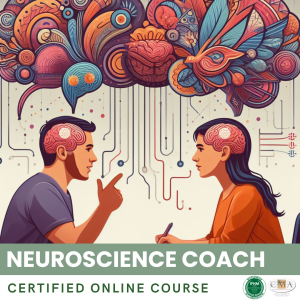Minority stress is a key concept in understanding the mental health issues of LGBTQ+ individuals. Developed by researcher Ilan Meyer, it refers to the chronic stress experienced by individuals belonging to stigmatized social groups, such as sexual and gender minorities. This stress is added to the usual stress factors encountered by everyone and specifically arises from belonging to a minority.
LGBTQ+ individuals confront multiple stress factors related to their identity daily. The prevailing heterosexism and cisnormative attitudes, which pervade every sphere of social life, expose them to repeated micro-aggressions: disapproving glances, inappropriate comments, intrusive questions, misgendering… These everyday violences, often invisible to those not affected, create a constant sense of insecurity and rejection.
In addition to these micro-aggressions, there are more direct experiences of discrimination and violence: homophobic or transphobic insults, harassment, physical attacks, discrimination in hiring or housing… These traumatic events have a lasting impact on mental health and can trigger post-traumatic stress.
Even in the absence of direct violence, LGBTQ+ individuals internalize society’s negative messages about their identity at an early age. This internalized homophobia/transphobia manifests as constant self-surveillance, shame about their identity, and anxious anticipation of rejection. A young gay person may spend their adolescence scrutinizing their actions and words for fear that their sexual orientation will be discovered and penalized.
Minority stress has harmful consequences on overall health. It triggers a chronic activation of the stress system, with increased cortisol secretion and emotional and cognitive hypervigilance. Over the long term, this chronic stress raises the risk of developing anxiety disorders, depression, addictions, and cardiovascular diseases. It also impacts self-esteem, the sense of control over one’s life, and the quality of social relationships.
In response to this burden, LGBTQ+ individuals develop coping strategies to maintain their well-being. Some are positive, such as engaging in the community, asserting their rights, or surrounding themselves with supportive people. Others are more harmful, such as concealing their identity, isolating themselves, or relying on substances to manage stress.
A few examples of situations:
– Lea, a young 20-year-old lesbian, regularly hears jokes about lesbians at her workplace. Although not directly targeted, she lives in constant stress, swinging between anger and shame, and does not dare to come out for fear of retaliation. The coach helps her identify this minority stress, express her emotions, and find safe spaces.
– Samir, a 35-year-old gay man, suffered a homophobic attack a few years ago. Now, he lives in fear, avoids certain places, and has panic attacks when he feels scrutinized on the street. With the coach’s help, he learns to deconstruct his feelings of insecurity, ground himself in the present, and develop self-care rituals.
– Alix, a 25-year-old non-binary individual, grew up in a very religious family that condemns transgender identity. They internalized a feeling of shame and abnormality, which drives them to hide their identity and isolate themselves. The coach helps them deconstruct these negative messages, embrace self-acceptance, and find support among other non-binary individuals.
– Tom, a 40-year-old trans man, faces constant stress related to passing. Despite his transition, he always fears being misgendered and discriminated against in public spaces, especially after a distressing experience in a restroom. The coach works with him on self-assertion, managing others’ perceptions, and validating his presence in all spaces.
As a coach, it is crucial to understand and validate the experience of minority stress without diminishing or psychologizing it. The goal is to help the individual identify the stress factors specific to their identity, express the emotions that flow from them, and mobilize their resources to cope. Work often must be done on cognition (deconstructing negative self-beliefs, relativizing others’ perceptions), on the body (relaxation techniques, grounding in the present), and on relationships (seeking support, affirming personal needs).
The coach can also refer individuals to community resources (associations, support groups, events) that help break isolation, share experiences, and develop a sense of belonging. Interacting with supportive peers, feeling normal and legitimate in one’s identity is a powerful protective factor against minority stress.
Finally, the coach must adopt an affirmative and inclusive approach, free of any judgment or stereotype. Using the correct name/pronoun, not assuming sexual orientation, and staying informed about LGBTQ+ issues are all signals that contribute to creating a safe and validating space, conducive to letting go and change. Being an active ally in the fight against discrimination also contributes to reducing minority stress at its source.
Key takeaways:
– Minority stress is a key concept that signifies the chronic stress experienced by LGBTQ+ individuals because of their membership in a stigmatized social group.
– LGBTQ+ individuals face multiple stress factors: micro-aggressions, experiences of discrimination and violence, internalization of society’s negative messages
– Minority stress has detrimental consequences on mental and physical health: anxiety disorders, depression, addiction, cardiovascular diseases, impacts on self-esteem, and social relations.
– LGBTQ+ individuals develop coping strategies in response to minority stress, some positive (engagement, advocacy, social support), others detrimental (concealing identity, isolation, substance use).
– As a coach, it is crucial to understand and validate the experience of minority stress, help the individual identify stress factors, express their emotions, and mobilize their resources.
– Work on cognition, body, and relationships can help cope with minority stress. Referring to community resources is also beneficial.
– The coach should adopt an affirmative and inclusive approach, create a safe and validating space, and actively commit to fighting against discrimination.
👉 To download docx (Editable) file click here : Click here
👉 To download PDF file click here : Click here
👉 To download MP3 file click here : Click here







